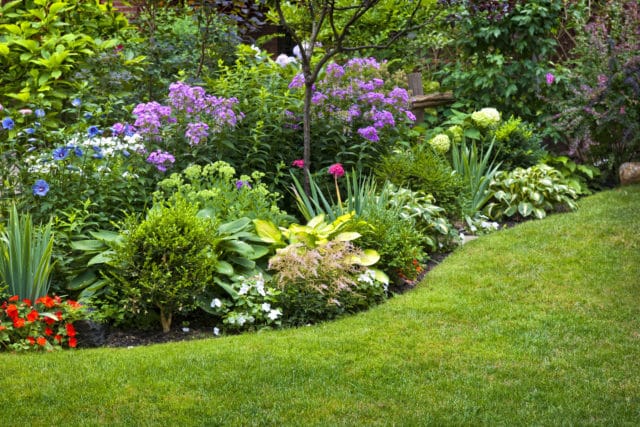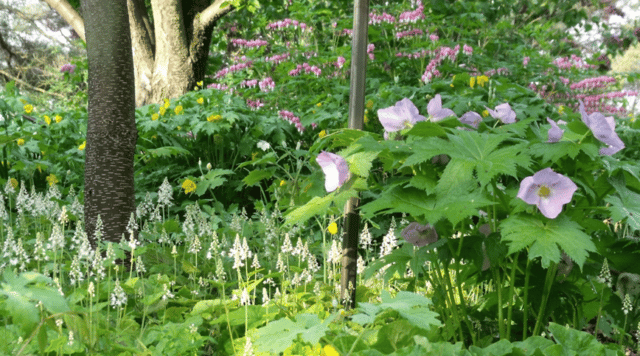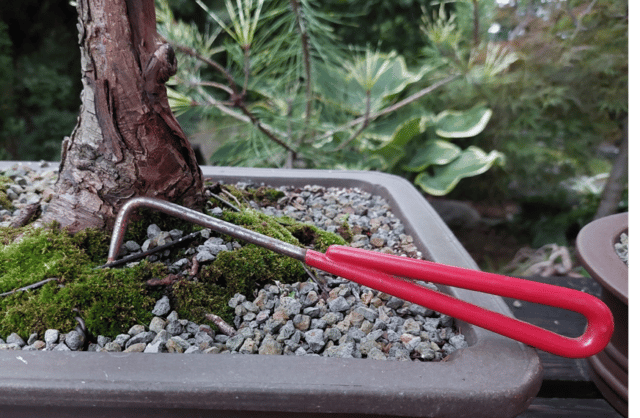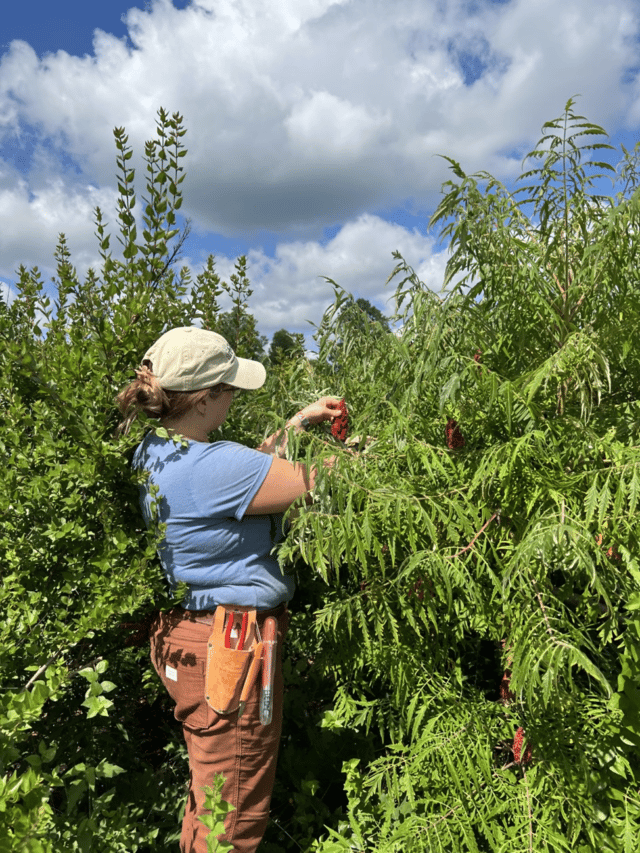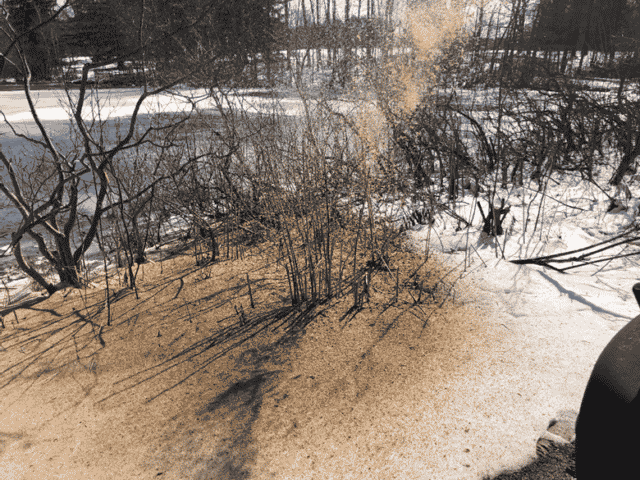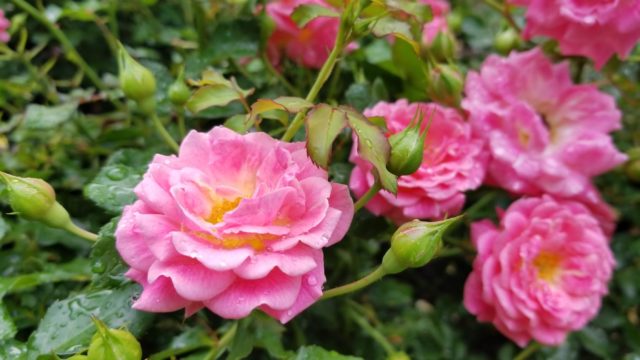
This time of year, we begin propagating plants for the coming summer. And whether growing by seed or cutting, potting media needs to be kept uniformly moist to get the plants off to a good start. Unfortunately, this moist media is an invitation for fungus gnats to breed.
Fungus gnats are fruit-fly sized insects that feed on decaying matter in the soil. The adults (seen flying around) are harmless to people and plants. The larvae breed in the soil and can cause root issues in large enough numbers. If you have houseplants and fungus gnats, chances are you are not letting the pots dry out between watering. The gnats will disappear without the moisture to breed in.
But since propagation requires consistent moisture, gnats are a given nuisance. There are several options for controlling them including yellow sticky traps and cider vinegar. A more entertaining and cathartic method is to employ carnivorous plants to aid in population control.
A personal favorite is the Drosera genus commonly known as the sundews. The Droseraceae family is comprised of at least 194 genera found on five continents. The leaves are covered with tiny hairs that exude a clear, sticky fluid (the “dew”). The sticky droplets trap unwary insects that come in contact with it. Then the victim’s struggling stimulates the hairs to bend inward, drawing it closer to the leaf where it is digested into plant nutrients.
Plant breeders have hybridized many more of these dainty yet dangerous (for insects) plants. Many can be grown as houseplants, but some are easier than others to care for. Here are a couple of the easier ones to consider.
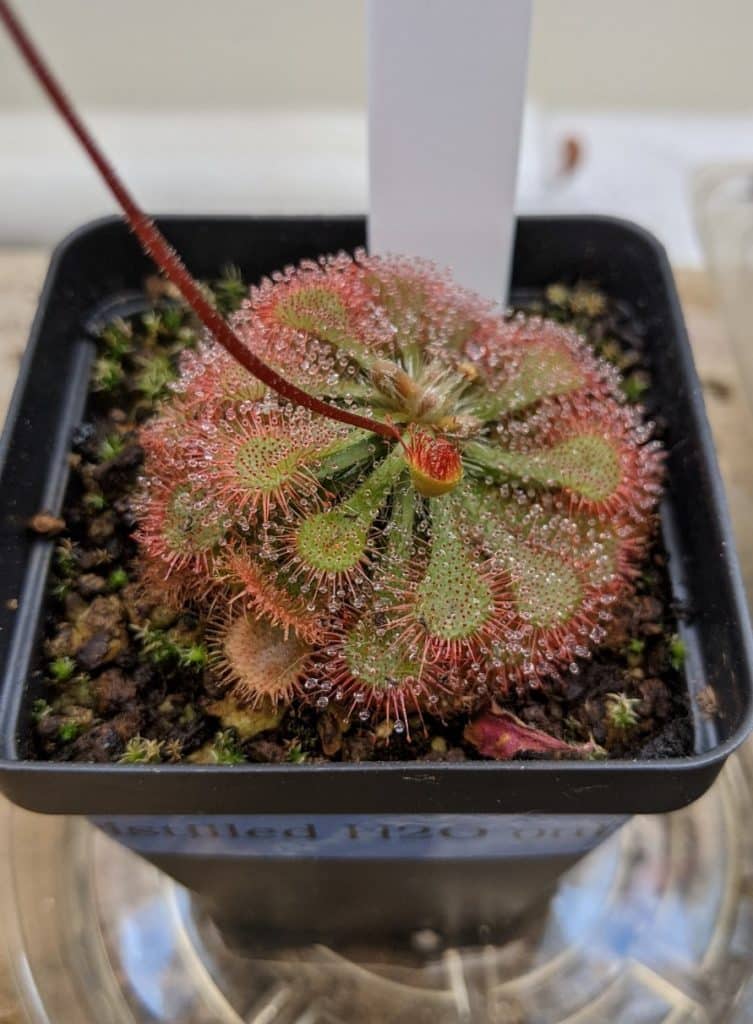
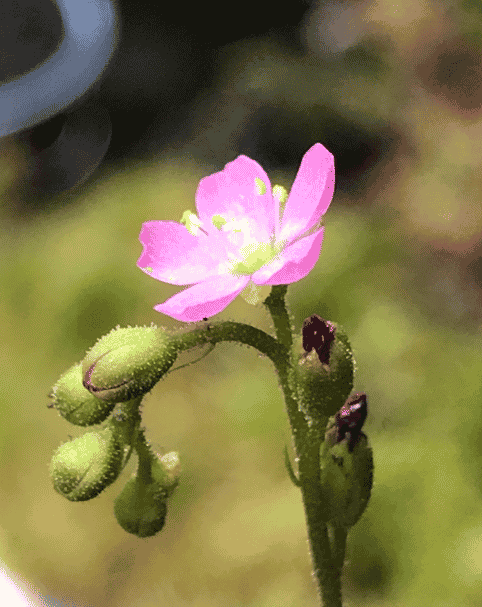
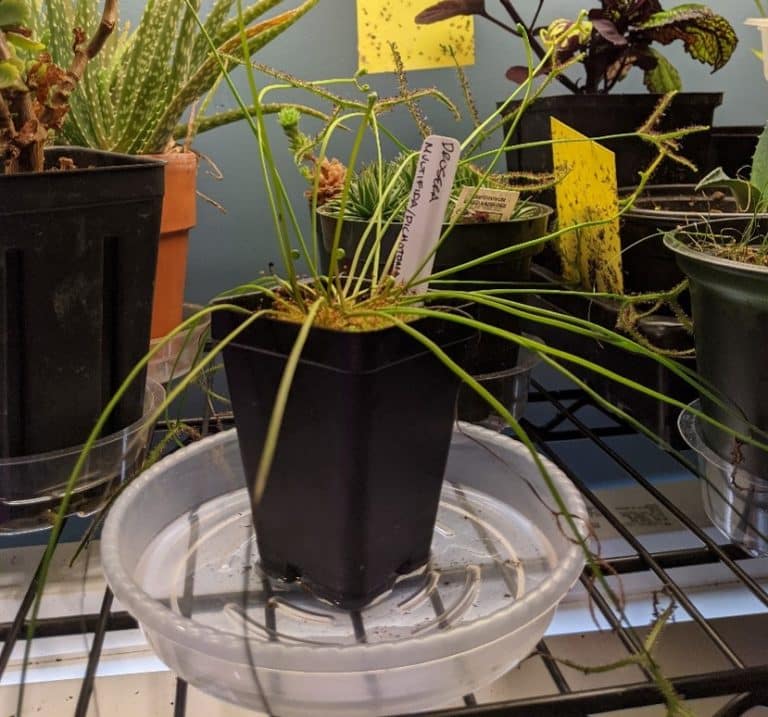
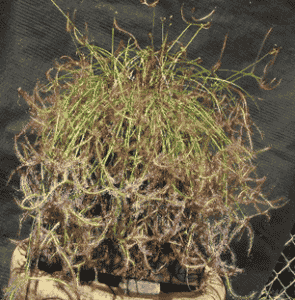
Close up (left) of the business end of the Drosera binata var. multifida leaf where you can see the characteristic “dew” and many victims. 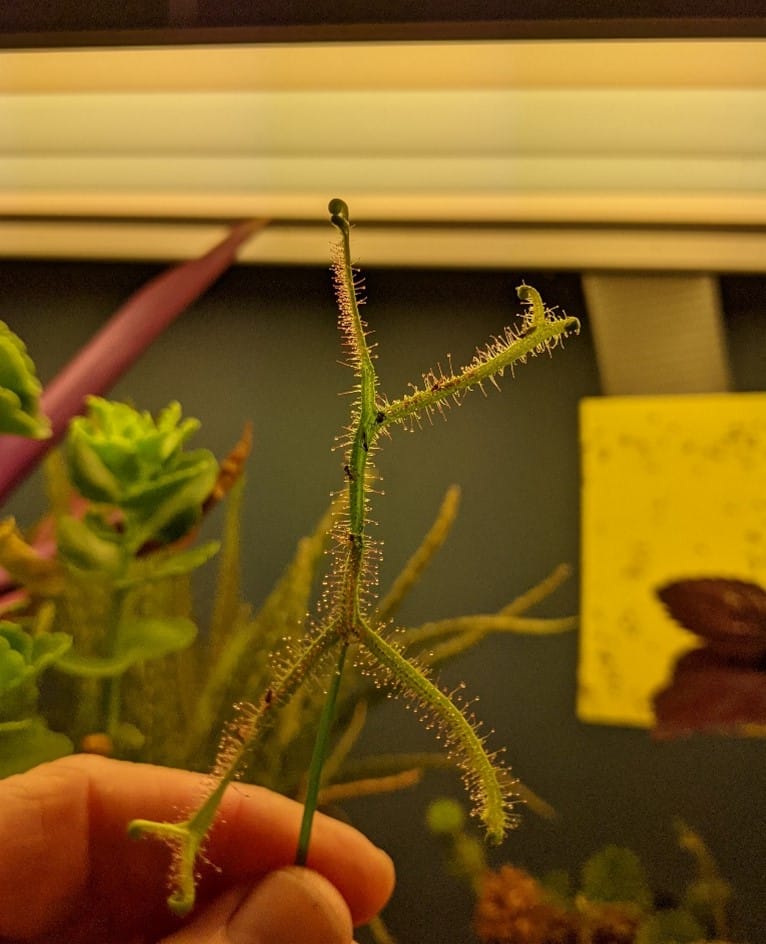
Right is a picture of a plant around 20 years old.
Here are your basic indoor sundew care tips for the sundews mentioned in this blog.
Water: To avoid mineral build up in the soil which can be fatal to sundews, use distilled, rain or reverse osmosis water. The great thing is that you can’t over-water them since they need to sit in about half an inch of water. You can use a tray or saucer to hold the water. Periodically water the plant from the top to help rinse out any mineral build-up in the soil. You will need to periodically clean your reservoir to minimize algae.
Light: Sundews need strong light, at least 6 hours a day. If the plant does not seem to be thriving and it is catching food, it may not be getting strong enough light. They can be grown under fluorescent lights (40watt or higher). And while they do well in direct sunlight, they can get too much; if you start to see foliage burning then adjust accordingly.
Feeding: In order to grow and flower, sundews need to feed on a regular basis. If you are cursed with gnats or fruit flies, you are probably all set. If for some reason no insects are visiting your sundew, manual feeding may be necessary. There are several methods but one of the most effective is to use ground beta fish food. Click on the link for a YouTube video detailing this procedure. https://www.youtube.com/watch?v=Lu9dtgQZghU
Sundews may not eliminate all your insect issues, but they provide a beautiful and entertaining control option.
Other links:
https://www.carnivorousplants.org/ International Carnivorous Plant Society
http://carnivorousplantsociety.ca/index.php Carnivorous Plant Society of Canada
Rob Dzurec
Horticulturist
Rob has been expertly plying his horticultural expertise at Cleveland Botanical Garden for eight years. His current role enables him to provide creative and colorful care for all the exterior gardens, and to foster and support the work of the Western Reserve Herb Garden volunteer corps. Rob is a graduate of the Kent State University horticulture program.

